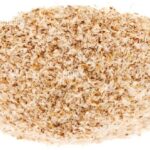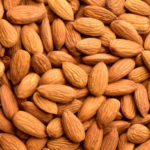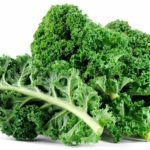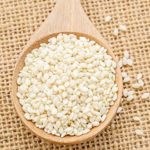Dear Readers, Just don’t be afraid in front of fresh figs even those who have never eaten them can boldly dare, because they are tasty and very easy to prepare. Apart from that, they taste great and otherwise only have advantages to offer health and beauty.
Figs protect the cells
Fresh figs are a good way to meet your daily need for vitamin E and 4 percent of it contains 100 grams of pulp and thus supports the body in defending itself against cell-damaging substances such as free radicals.
CO2 balance
With an emission value of fewer than 130 grams per 100 grams, this fruit has a good carbon footprint. The CO2 values are based on the calculations of the IFEU Institute for Energy and Environmental Research Heidelberg and were individually balanced for each food item as “average food”.
They take into account the production location, the production method, all associated transports, processing, packaging, and storage proportionally. The emissions of all greenhouse gases such as B. carbon dioxide (CO2), methane (CH4), and nitrous oxide (N2O) were taken into account and converted into CO2 equivalents. In simplified terms, however, only CO2 is used.
Figs are good for the bones
Admittedly – 54 milligrams of calcium per 100 grams of figs are not great, but they still cover 5 percent of the daily requirement of this bone-strengthening mineral. A great addition to this is the rather abundant vitamin K, which prevents bone loss.
Figs contain a lot of iron
Women and veggies, in particular, should snack on this fruit more often! For every 100 grams, they contain 600 micrograms of about 5 percent of the daily requirement and thus support blood formation.
Figs provide the mineral potassium
100 grams of this fruit contain 240 milligrams of potassium. This mineral has an antihypertensive effect important for the nerves, and it plays important role in metabolism. A lack of potassium can lead to disorders of the heart and the electrolyte balance.
Figs strengthen the defense
This fruit is definitely a good choice for the immune system. They provide significant amounts of zinc, which promotes the immune system and also ensures healthy skin, beautiful hair, and well-functioning cell division.
Figs offer B vitamins
Even if the amounts are relatively small – 100 grams of fresh figs contain 3 to 8 percent of the daily requirement of all the important vitamins of the B group that are found in figs.
Promote digestion
True, this fruit is not particularly high in fiber. Nevertheless, you can use it to gently push a sluggish intestine, because with fresh figs the soft skin is also edible, which offers more indigestible fibers than the pulp. However, it is important to rinse well before consumption!
Know about figs
From a botanical point of view, it is actually false fruits. The actual fruits are the numerous soft yellow kernels that are hidden in the juicy pink to red flesh. You can not only eat them, they also have a lot of valuable ingredients to offer.
Since fig trees produce up to three times a year, the harvest is correspondingly plentiful and so that it does not perish, a large part of the fresh figs is dried in the sun or in special ovens.
In doing so, they are not necessarily more beautiful, but extremely rich and sweet. When drying, this fruit gets a flat shape and brown color, the fruit juice, and fructose they contain crystallize and make the figs particularly durable.
Origin
The original home of the fig trees is the Orient. In the meantime, however, they have long been growing in most of the other warm countries in the Middle East and around the Mediterranean, as well as in California and Australia.
Season
Fresh fruit comes from the Mediterranean countries from July to November. Then they are flown in from California, Australia, and Brazil. You can buy dried figs all year round.
Taste
Fresh fruit has a slightly sweet, very mild taste. Dried figs taste very sweet.
How healthy are figs?
Although it is not necessarily one of the lowest-calorie fruits, they are still a good choice for figure-conscious people. On the one hand, they contain little fat, but a lot of filling fiber, and on the other hand they score with a whole package of valuable ingredients such as provitamin A, iron, magnesium, phosphorus, and calcium.
The content of these important substances is particularly high in dried figs because they can concentrate when dried. The proportion of magnesium in dried figs, for example, is particularly noteworthy: the sweet treat has up to 75 milligrams of this muscle and nerve-strengthening mineral. Last but not least, dried figs are an important source of magnesium for vegetarians.
Storage
Fresh figs are sensitive and do not tolerate pressure or long storage. They keep for about a day at room temperature and up to three days in the refrigerator. With dried figs, you can simply use the best before date as a guide.
Preparation
You can eat the skin with fresh figs. But even if that’s not what you intend to do thorough washing is a must. Rinse this fruit well under running water and then shake them dry or dab them dry with kitchen paper. Now cut off the stalks from this fruit and then, depending on the recipe or taste, with the help of spoon out the pulp.













Leave a Reply